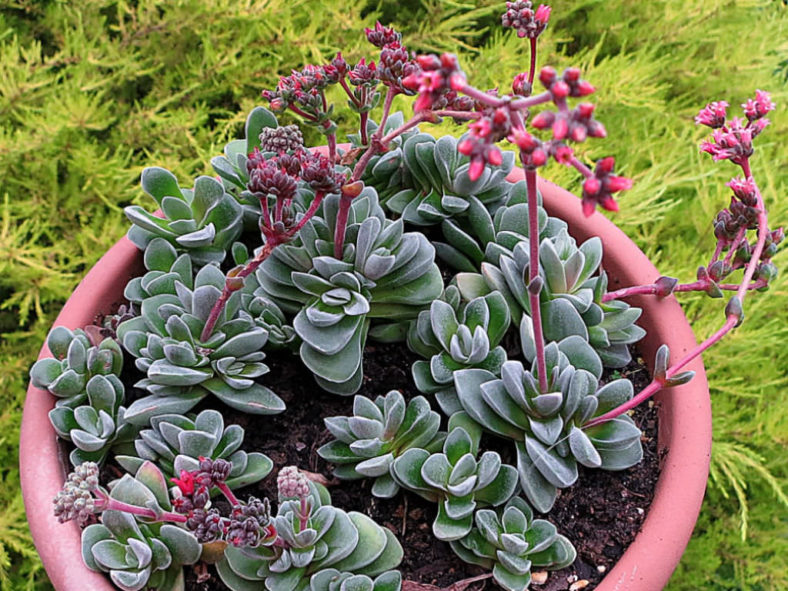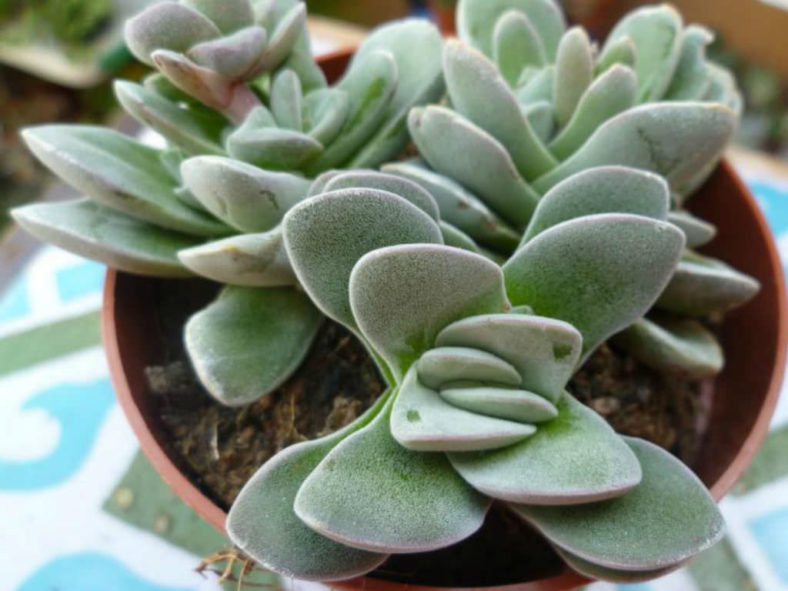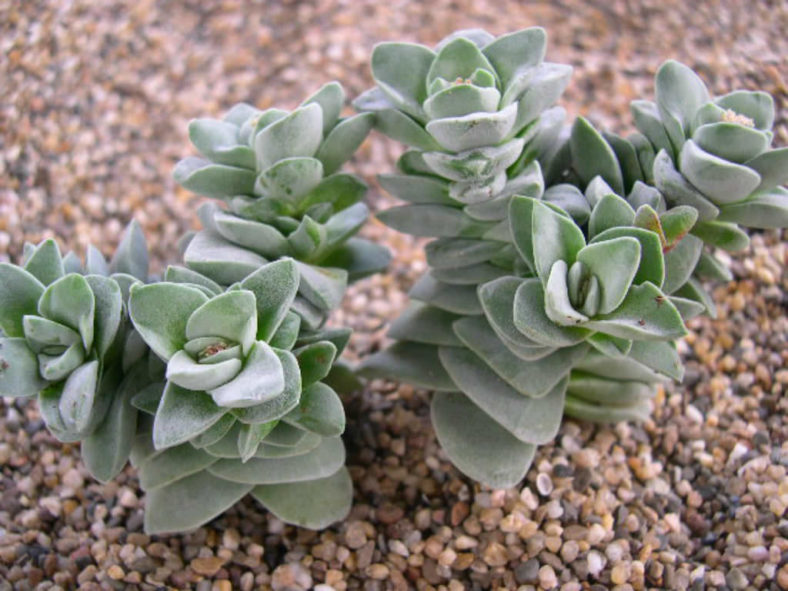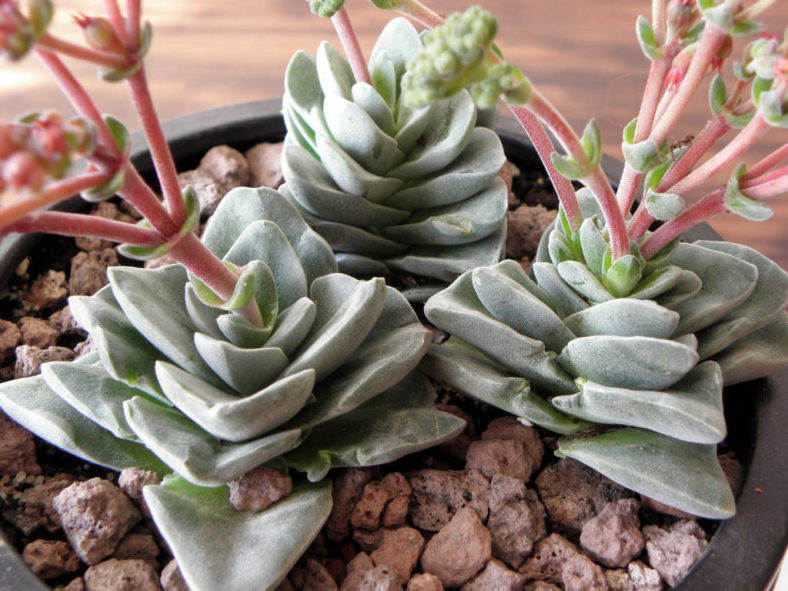Scientific Name
Crassula 'Coralita'
Scientific Classification
Family: Crassulaceae
Subfamily: Crassuloideae
Genus: Crassula
Origin
Crassula 'Coralita' is a hybrid created by Myron Kimnach in 1981. It results from a cross between Crassula suzannae and Crassula perfoliata var. minor (formerly known as Crassula falcata).
Description
Crassula 'Coralita' is an attractive, compact succulent with thick, fleshy, grayish-green leaves covered in fine, short, white hairs, forming an x-shaped pyramid. It can grow up to 6 inches (15 cm) tall.
The flowers are coral pink and appear in fall, clustering on branched stalks that can grow up to 3 inches (7.5 cm) long.

Hybrids of Crassula 'Coralita'
How to Grow and Care for Crassula 'Coralita'
Hardiness: USDA hardiness zones 9b to 11b: from 25°F (-3.9°C) to 50°F (10°C).
Crassulas are easy to grow, but they are susceptible to mealybugs and fungal diseases. As with all succulents, overwatering is sure to be fatal, so err on the side of too dry rather than too wet. Never let your plant sit in water. If you water from beneath by allowing the plant to sit in a saucer full of water, make sure to pour off any excess water after a few minutes.
These succulents are generally started by division, offsets, or leaf cuttings. Crassulas can be easily propagated from a single leaf. Sprout leaves by placing them into a potting mix for succulents, then covering the dish until they sprout.
Repot as needed, preferably during the warm season. To repot your Crassula, ensure the soil is dry before repotting, then gently remove the pot. Knock away the old soil from the roots, removing any rotted or dead roots in the process. Treat any cuts with a fungicide. Place the plant in its new pot and backfill it with potting soil, spreading the roots as you repot. Leave the plant dry for a week or so, then start watering lightly to reduce the risk of root rot.
Learn more at How to Grow and Care for Crassula.
Links
- Back to genus Crassula
- Succupedia: Browse succulents by Scientific Name, Common Name, Genus, Family, USDA Hardiness Zone, Origin, or cacti by Genus
Photo Gallery
Click on a photo to see a larger version.


